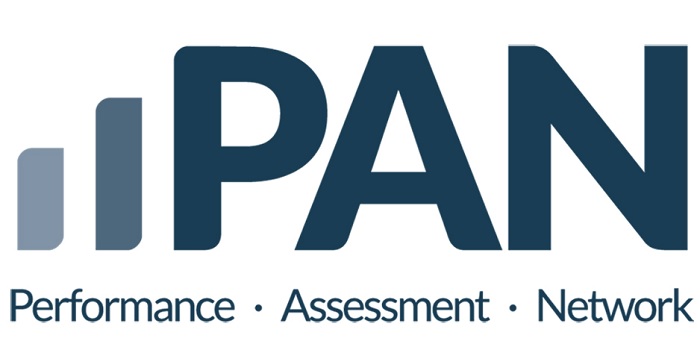Table of Contents
- The Benefits of Utilizing Performance Assessment Network (PAN)
- Exploring the Different Components of PAN
- How to Implement a Performance Assessment Network (PAN) in Your Organization
- Analyzing the Results of Performance Assessment Network (PAN) Assessments
Performance Assessment Network (PAN) is an organization dedicated to promoting evidence-based assessment practices for evaluating student learning. PAN works to develop and advocate for assessment practices that are reliable, valid, and equitable. They provide resources for educators, administrators, policymakers, and researchers to use when designing and implementing assessments, as well as professional development opportunities for those involved in the assessment process. Through their work, PAN seeks to ensure that assessments measure what students know and can do, rather than just memorizing facts and figures.
How PAN is Revolutionizing Employee Performance Evaluation
Employee performance evaluation is an important part of a company’s operations, as it helps to assess employee performance and identify areas in which they can improve. Performance evaluation is often a tedious process, requiring significant time and resources to complete. However, with the introduction of Performance Appraisal Network (PAN), this process has been revolutionized. PAN is a web-based platform that simplifies the performance evaluation process. It provides a comprehensive system for evaluating employee performance, with features such as customizable questionnaires, automated alerts, and real-time data collection.
This makes it easier for employers to assess employee performance quickly and efficiently. In addition, PAN makes it easier to compare performance across employees. With its ability to track the performance of each employee in real time, it allows employers to identify areas where employees might need additional training or coaching. This helps them to provide timely feedback and ensure that employees are performing at their best.
Further, PAN also allows for employee self-evaluation. This enables employees to provide feedback on their own performance, which can be used to inform decisions about their development and career progression. Overall, PAN is revolutionizing the employee performance evaluation process. By simplifying the process, and providing features that make it easier to compare and assess performance, it is helping employers to make better decisions about their employees. This is leading to improved performance, and ultimately, greater success for companies.
The Benefits of Utilizing Performance Assessment Network (PAN)
Performance Assessment Network (PAN) is a comprehensive system designed to evaluate employee performance in an organization. PAN provides a framework to assess individual, team, and organizational performance in a consistent and objective manner. The system has been designed to enable organizations to effectively measure and improve the performance of their employees and teams. One of the primary benefits of using PAN is its ability to provide a more comprehensive view of an employee’s performance. By utilizing a standardized set of criteria, PAN can provide a more accurate assessment of an employee’s performance and provide feedback that is tailored to their individual strengths and weaknesses. This helps to ensure that employees are receiving consistent and constructive feedback that can be used to improve their performance.
The use of PAN also helps to provide a more accurate evaluation of an individual’s performance. It can be used to assess an employee’s performance in a variety of areas including productivity, customer service, and problem-solving. This helps to ensure that the feedback provided is based on accurate data and that employees are not being judged unfairly. In addition to providing a more accurate assessment of an employee’s performance, PAN also helps to create a more equitable and transparent system for evaluating performance. By providing a standardized system for evaluating employee performance, PAN can help to ensure that employees are evaluated based on their true capabilities and not on arbitrary criteria.
This helps to reduce the potential for bias or unfairness in the assessment process. Finally, PAN can help to reduce the time and effort required to assess employee performance. By utilizing a standardized system, PAN can streamline the assessment process and reduce the amount of time required to complete an assessment. This can help to free up resources and allow organizations to focus on other areas of their business. In summary, Performance Assessment Network (PAN) is an effective tool for evaluating employee performance in an organization. It provides a comprehensive view of employee performance and allows organizations to assess performance in a consistent and equitable manner. Furthermore, PAN can help to reduce the time and effort required to assess employee performance, freeing up resources and allowing organizations to focus on other areas of their business.
Exploring the Different Components of PAN
The Pervasive Authentication Network (PAN) is a secure authentication system designed to protect online accounts and transactions. It is a multi-layered system that uses a combination of digital certificates, biometric data, and a secure communication channel to validate user identity and authorize access to protected data. The PAN is an important tool for safeguarding the privacy and security of online accounts and transactions, as it provides a secure method of authentication and authorization. The PAN consists of several components, each of which plays a critical role in its overall security. The first component is the Certificate Authority (CA). The CA is responsible for issuing, renewing, and revoking digital certificates used by the PAN.
It is also responsible for verifying the identity of the user and ensuring that the user is authorized to access the protected data. The second component of the PAN is the Public Key Infrastructure (PKI). The PKI is responsible for generating, managing, and distributing digital certificates used by the PAN. It also provides a secure communication channel between the PAN and the user’s device. The third component is the Authentication Server (AS). The AS is responsible for validating user identity and authorizing access to the protected data. It uses a combination of biometric data, such as fingerprints, retinal scans, and facial recognition, as well as digital certificates, to authenticate the user.
The fourth component is the Access Control Server (ACS). The ACS is responsible for controlling access to the protected data. It ensures that only authorized users are able to access the data, and that only authorized actions can be taken on the data. The PAN is an important tool for protecting online accounts and transactions. With its multi-layered security system, it is able to provide a secure method of authentication and authorization. It is a vital component of online security, and it is important to understand the different components of the PAN in order to ensure that it is used properly.

How to Implement a Performance Assessment Network (PAN) in Your Organization
Performance Assessment Networks (PANs) are an effective and efficient way to evaluate the performance of employees and teams in an organization. A PAN is a system of networks in which members of an organization can assess each other’s performance on a regular basis. This system allows for thorough review and feedback on various tasks, activities, and goals, which can help identify areas of improvement and areas of excellence. Implementing a PAN in an organization can be a complex process that requires careful planning. To begin, it is important to set up the PAN structure, which includes outlining the roles and responsibilities of the participants, as well as the objectives and expectations for the PAN. Once the structure is in place, it is important to create a timeline and set clear deadlines for assessments and evaluations.
Additionally, it is important to ensure that the assessment criteria are clearly communicated to all participants, and that all participants have access to the necessary resources and training for the PAN. Once the structure and timeline have been established, it is important to identify the members of the PAN. This should include people from all levels of the organization, as well as people who are familiar with the goals and objectives of the PAN. Additionally, it is important to ensure that the level of expertise and skills of the members is appropriate for the PAN. Once the members have been identified, it is important to create a system for tracking and recording assessments and evaluations.
This can include creating a shared document or database that everyone can access, as well as establishing a system for providing feedback on assessments and evaluations. Additionally, it is important to establish a system for identifying areas of improvement and areas of excellence. Finally, it is important to monitor the performance of the PAN on a regular basis. This can include setting up regular meetings to discuss progress, reviewing the assessments and evaluations, and making any necessary changes to the PAN.
Additionally, it is important to reward and recognize participants who have performed well on the PAN. By implementing a Performance Assessment Network in an organization, employees and teams can be evaluated on a regular basis, offering valuable feedback and insights that can help identify areas of improvement and areas of excellence. With careful planning and execution, a PAN can be an effective tool for evaluating performance in an organization.
Analyzing the Results of Performance Assessment Network (PAN) Assessments
Performance Assessment Network (PAN) assessments are used to evaluate individual and team performance in organizations. The assessment provides organizations with valuable information about their staff and teams, and provides the opportunity to identify and address areas of improvement. In order to make the most of the PAN assessment results, it is important to analyze the data accurately and take appropriate action. The first step in analyzing the PAN assessment results is to identify any areas where individual or team performance is falling below the expected level. This can be done by comparing the PAN assessment scores to other measures, such as customer feedback or sales figures.
Once any areas of underperformance have been identified, it is important to determine the root cause of the problem. This can be done by examining the data more closely, and by talking to staff or team members to gain an understanding of what is causing the underperformance. Once the root cause of any underperformance has been identified, it is important to develop an action plan to address the issue. This action plan should involve setting goals and objectives that are achievable and measurable, and creating a timeline for achieving them. It should also involve implementing processes and procedures that will help to ensure that the desired performance is achieved.
Finally, it is important to regularly review the PAN assessment results to measure the impact of the action plan. This will help to ensure that the desired results are achieved, and will also allow the organization to track progress over time. By taking the time to accurately analyze the PAN assessment results, organizations can ensure that they are making the most of the information they have available. This will enable them to identify and address any areas of underperformance, and to ensure that their staff and teams are performing to their full potential.
Conclusion
In conclusion, Performance Assessment Network (PAN) is a valuable tool for educators, administrators, and policy makers to assess the performance of students and schools, as well as to collect data and measure progress. It provides an efficient way for schools to monitor student performance and make necessary adjustments to improve performance. PAN can help educators make data-driven decisions, provide targeted instruction, and provide feedback that can help students reach their academic goals.
